
“The truth is there ain’t no Negro problem any more than there’s a Irish problem or a Russian or a Polish or a Jewish or any other problem. There is only the human problem. All we demand is the open door. You give us that, and we won’t ask nothin’ more of you.” - Union member, The Chicago Race Riots, pg. 56.Sandburg's Perspective on the Chicago Race RiotsCarl Sandburg was born more than a decade after the Civil War. But his experiences instilled understanding of the Civil War and Abraham Lincoln in his education. The writer grew up in Galesburg, the site of Abraham Lincoln and Stephen Douglas's debate. The town is also a stop on the Underground Railroad. Life here exposed him to the history of the Civil War. Sandburg himself experiences the life of a solider in 1898. Sandburg served in the 6th Regiment Illinois Volunteers in Puerto Rico under General Nelson A. Miles. In the Civil War Miles was a brigadier general in some of the bloodiest battles of the Potomac. Sandburg’s own immigrant experience and early life shaped his beliefs. Life taught him to believe economic inequality was the root cause of all social strife. He knew that not all welcomed the freedom of over four million African Americans. After the Civil War, countless Black Americans faced terror and discrimination despite liberation. When the Chicago race riots broke out in 1919, Sandburg was reminded of the savagery of the Civil War. To him, the end of the Civil War was the start of a bitter battle for Civil Rights in America.
The Daily News sent Sandburg to investigate the causes of racial tensions in Chicago. Sandburg spoke with many people in the "Black Belt." He found their reasons for moving from the South to be direct; find jobs and better lives. Instead, they encountered closed doors, violence, and harassment. He interviewed returned veterans and mothers alike, and always found the same answer. Sandburg concluded that economic equity would ease the “race question.” While on this assignment Sandburg wrote, “On the one hand we have blind lawless government failing to function through policemen ignorant of Lincoln, the Civil War, the Emancipation Proclamation, and a theory sanctioned and baptized in a storm of red blood. And on the other hand we have a gaunt involuntary poverty from which issues the hoodlum.” Race Tensions Rise in Advance of Chicago Riot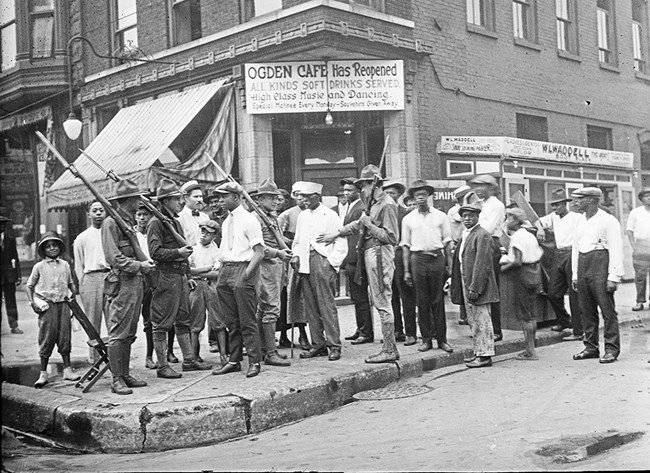
Fujita, Jun. 1919. Jun Fujita Negatives Collection, Chicago History Museum, Chicago. His articles advocated for more education, job training, and equal housing access. His recommendations were considered radical and would go unheeded for almost forty years. His articles were published as a pamphlet titled, Chicago Race Riots: July 1919. His writing reported the harsh facts of race relations in Chicago and across the nation. His work gained notice through its unbiased and objective reporting. In 1965, Sandburg received a Lifetime Achievement award from the National Association for the Advancement of Colored People. Sandburg considered this achievement one of his proudest accomplishments. Of his many awards, this would be one of the few Sandburg ever displayed at Connemara.
The violence ended after the National Guard stepped in. Deadly racial riots had occurred across the U.S. during 1919’s “Red Summer.” Many considered the Chicago’s riots the worst.
In 1919, Carl Sandburg was a Chicago Daily News reporter. His articles before, during, and after the riots revealed many causes. Sandburg's experiences with poverty and interviewing often-ignored immigrants and migrants provided great insight. His articles were unique in 1919 and remain powerful 100 years later.
Tensions Continue to Rise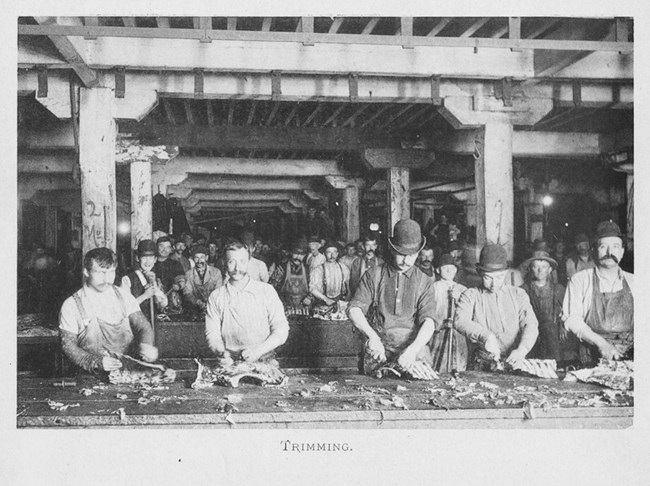
Views in the Chicago Stock Yards and Packing Houses, Chicago History Museum, Chicago. ICHi-034356. After World War I, thousands of European immigrants and African Americans moved to Chicago. They crowded into existing housing, and disease was rampant. Newcomers competed for the same jobs. Sandburg was the only White reporter to delve into these social issues. Sandburg’s first article ran on July 14—two weeks before the riots began: "In any American city where the racial situation is critical at this moment, the radical and active factors probably are (1) housing, (2) politics and war psychology, and (3) organization of labor." Sandburg, The Chicago Race Riots, pg. 6. Sandburg’s Articles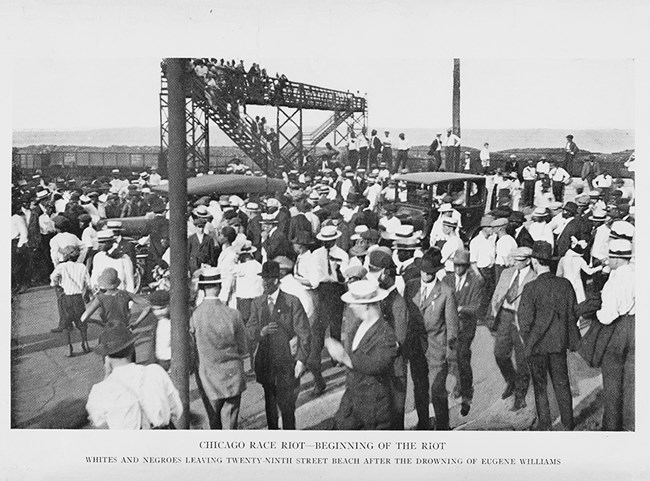
The Negro In Chicago, Race Riot Images, Beginning of the Riot, Whites and Negros Leaving Twenty-Ninth Street Beach After the Drowning of Eugene Williams. July 27, 1919. By The Chicago Commission on Race Relations. Chicago History Museum, Chicago. ICHi-030 Sandburg was drafting “constructive recommendations" when the riots began on July 27th. Sandburg based his recommendations on the input of locals, union members and the National Association for the Advancement of Colored People (NAACP). His articles detailed the root causes of the riots. They also gave recommendations to address the tensions. Sandburg's writing even provided the perspectives of those who experienced the violence. In 1919 the articles took form as a book which still provides historical insights today. Sandburg’s Contributions to Social Justice
Sandburg’s articles received praise from the Chicago Commission on Race Relations, a commission intended to address racial concerns. Later in life, he received an award from the NAACP for his lifelong commitment to social justice. The award was one of the few he kept on display at Connemara. “The following program adopted recently by the [NAACP] contains…the kinds of equality they are seeking: A vote…on the same terms as for white men and women…. Education…. A fair trail.… Defense against lynching and burning…. Equal service on railroads and other public carriers…. An equal chance for livelihood….” The Chicago Race Riots, pgs. 57-67. 50 Years Later...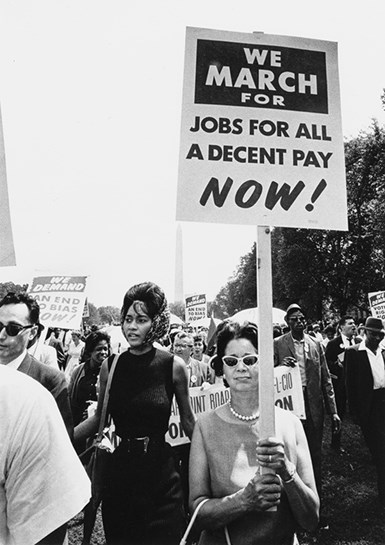
Haun, Declan. August 28, 1963. Declan Haun Collection of Visual Materials, Chicago History Museum, Chicago. ICHi-050226. Sandburg’s writings were again in sharp focus during the 1960s Civil Rights Movement: “Carl Sandburg’s reports of half a century ago are a serious indictment of us as a people. We are again confronted with our incredible neglect of social facts and our awareness of their meaning.”-Ralph McGill, Civil Rights activist, in the preface to the 1969 edition of The Chicago Race Riots. 100 Years Later...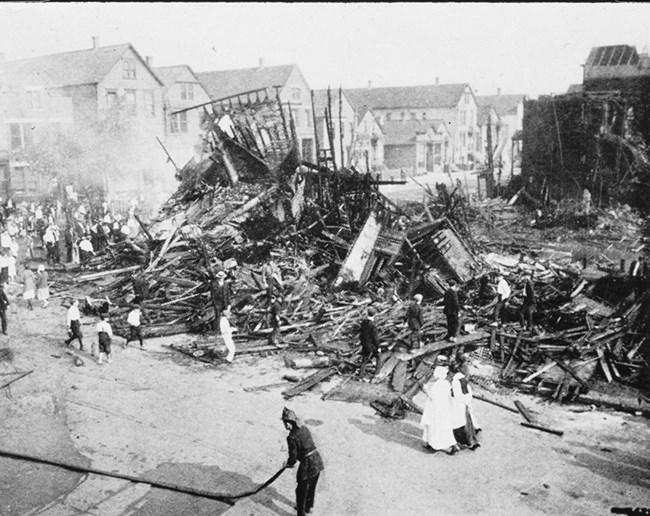
Chicago History Museum, Chicago. ICHi-031737. Sandburg’s writings still serve as poignant lessons on social justice and caution us to remember the lessons of history: “In the century since the riots, progress has come in fits and starts…. Human attention spans are short. Carl Sandburg, who witnessed and wrote about Chicago’s 1919 Riot, penned: ‘Sometimes I growl, shake myself and spatter a few red drops for history to remember. Then—I forget.’ As we, the people, move forward, the ghosts of the Chicago riot of 1919 and of all the other riots across the nation in that Red Summer [call] on us all to remember.” -Claire Hatfield, A Few Red Drops, 2018. Poem: "I Am The People, The Mob," Complete Poems, pg. 71. For current perspectives and observances about the 1919 Chicago Race Riots, please visit: www.chicago1919.org. Sandburg remained a champion of social justice throughout his lifetime, most notably through his poems. He captured the hardships, struggles, and perseverance of The People. Some of his writings are quoted in this exhibit. Please browse the books below to read these works in full.
|
Last updated: June 9, 2023
